News from Mathsblog.co.uk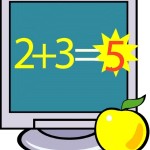 Internet access for low income families
Internet access for low income families
The Government is beginning to put into practice its scheme to ensure that all school age children have computer access at home. They are piloting the scheme in Suffolk and Oldham in February by providing grants to pay for one computer, software, internet access and 3 years’ technical support. It will be aimed at those families on income support.
Jim Knight, Schools Minister says that having home access to the internet is fast becoming essential. He goes on to say,
“Schools are revolutionising how they educate faster than many families realise. There is no substitute for good classroom teaching but day-to-day school work is increasingly web and computer based – and it is clear that students get better results where technology is used effectively at home to study, research and communicate.”
By the autumn of 2009 it is hoped to have the scheme operating nationwide.
Maths vocabulary: Year 2 Counting and Place Value
Maths vocabulary from mathsblog.co.uk
Some quite difficult vocabulary is introduced in Year 2. We shall start with the recommended new vocabulary for Counting and Place Value.
Words to do with Counting and Properties of numbers are:
hundreds thousand
threes fours fives sixes
sevens eights nines tens
twenty-first twenty-second etc
tally multiple of sequence continue predict rule
one-digit two-digit three-digit
place value stands for represents exchange
Much of the new vocabulary will be concerned with the introduction of multiplication and division, so a word like threes will be used in a question “How many threes in six?”
Remember that new vocabulary should not be introduced in isolation, but in suitable contexts.
(Taken from Mathematical Vocabulary Book DfEE)
Below is a link to these words written so that they can printed be displayed.
Maths worksheet: moving towards standard written methods
Moving towards standard written methods of addition: maths worksheet from mathsblog.co.uk
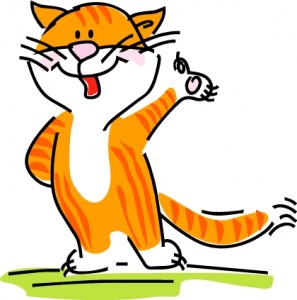 Just one page is not enough for children to become confident with a method, so I have included here a second maths worksheet which uses the ‘moving towards standard written methods’ of 2-digit addition.
Just one page is not enough for children to become confident with a method, so I have included here a second maths worksheet which uses the ‘moving towards standard written methods’ of 2-digit addition.
With this method the units are added and placed below the sum, mmaking sure the units are in line and the ten is placed in the tens column. The tens are then added and placed below. The crucial concept here is to remember that it is tens which are being added, so there will be a zero in the units column to ensure that the tens numbers are kept in line. Finally the two answers are added.
This method shows clearly what is happening and avoids the potentially troublesome ‘carrying’ of the tens when using the standard written method.
Moving towards standard written methods of addition (2)
Free maths worksheets: 10 x table
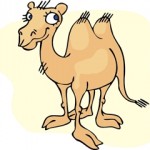 10x table maths worksheet from mathsblog.co.uk
10x table maths worksheet from mathsblog.co.uk
The 10 times table is often the second that is learnt by children, usually after the two times table. The reason for this is that it appears to be easy. Before attempting to learn the table children should have had plenty of practice counting up and down in tens.
However, there is a great danger with the ten times table in that many children are told to just ‘add a nought’ when multiplying by 10. This is disastrous to later understanding of place value and does not work when multiplying a decimal by 10 (eg 2.3 x 10 is not 2.30, it is 23).
The whole idea of tables is that they are learnt, off by heart. To do this it is essential to say them out loud:
One times ten is ten
two times ten is twenty
three times ten is thirty
four times ten is forty
five times ten is fifty
six times ten is sixty
seven times ten is seventy
eight times ten is eighty
nine times ten is ninety
ten times ten is one hundred.
Below are two free maths worksheets on the 10x table.
Free Y5 maths worksheet: partitioning large numbers
Free maths worksheet from mathsblog.co.uk
A good understanding of place value is needed to partition a number. Always think of large numbers in blocks of 3: hundreds, tens and units: then hundreds, tens and units of thousands: then hundreds, tens and units of millions. So 456 456 456 is four hundred and fifty six million, our hundred and fifty six thousand and four hundred and fifty six.
Partitioning a large number such as 2 345 678:
2 345 678 = 2 000 000 + 300 000 + 40 000 + 5 000 + 600 + 70 + 8
Try this worksheet:
Girls outshine boys at the age of 3!
Don’t be surprised if your daughter seems to be doing better at school than your son!
It has been a fairly well known fact that girls do better than boys at all levels of education from the age of the first SAT tests at 7 up to higher education.
A new report has just come out which suggests that this is true at an even younger age. A study from the Institute of Education in London (part of the Millennium Cohort study) says that girls are two months ahead of boys in verbal, non-verbal and visual skills at the age of 5. They even suggest that girls are doing better than boys at the age of 3! Continue reading “Girls outshine boys at the age of 3!”
Free maths worksheet: adding 6 to a single digit
Free maths worksheet from mathsblog.co.uk
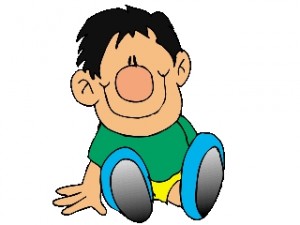 Here is another in our series of simple, single digit addition. This time there are two worksheets for adding 6 to a single digit.
Here is another in our series of simple, single digit addition. This time there are two worksheets for adding 6 to a single digit.
These pages can act as ‘brain training’ exercises, to help children get to know the number bonds from one to ten so that they can answer from memory. Knowing off by heart all the additions of numbers from 1 to 10 is a great help with rapid mental arithmetic later.
Free Y5 maths worksheet: making shapes game
Free maths worksheet from mathsphere.co.uk
 Here is a nice little game that you can play at home with a partner. Make sure that you have got a pile of cubes that interlock. Sit with your back to your partner. You each have the same number of cubes (about 6 – 9 are quite enough) and to begin with, the same colours. One of you makes a quite simple shape from about 6 cubes. You then describe your shape to your partner and they have to try and build an identical shape – not always as easy as it seems!
Here is a nice little game that you can play at home with a partner. Make sure that you have got a pile of cubes that interlock. Sit with your back to your partner. You each have the same number of cubes (about 6 – 9 are quite enough) and to begin with, the same colours. One of you makes a quite simple shape from about 6 cubes. You then describe your shape to your partner and they have to try and build an identical shape – not always as easy as it seems!
This is very good practice at describing shapes. Children can be helped initially by giving them cubes of different colours, but later use cubes of the same colour which need more description.
Maths vocabulary for year 1 (Position and instructions)
Year 1 maths vocabulary list from mathsblog.co.uk
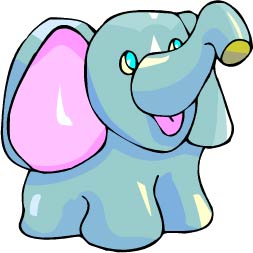 The final list of vocabulary that children in year 1 are expected to become familiar with is to do with position and general instructions. Earlier sets of words can be found in the reception worksheet section of the site.
The final list of vocabulary that children in year 1 are expected to become familiar with is to do with position and general instructions. Earlier sets of words can be found in the reception worksheet section of the site.
Words to do with position are:
underneath centre journey
whole turn half turn
There are also a number of instructions that children are expected to be familiar with, including:
listen remember point to arrange rearrange
separate carry on choose collect describe
explain record complete finish
(Taken from Mathematical Vocabulary Book DfEE)
The attached pdf has this vocabulary written large to cut out and use as flash cards/display etc.
Maths worksheets: 3 times table
3 x table maths worksheets from mathsblog.co.uk
 The 3 times table is one of the harder tables to learn – the pattern of even numbers found in the two times table is not there: but answers do alternate between odd and even. It is usually learned after the twos, tens and fives.
The 3 times table is one of the harder tables to learn – the pattern of even numbers found in the two times table is not there: but answers do alternate between odd and even. It is usually learned after the twos, tens and fives.
A good way of checking if an answer is correct is to see if the digits add up to 3, 6 or 9. eg 24: 2 + 4 = 6
Remember the danger is that some children are taught that they only need to count up the answers: 3, 6, 9, 12 etc. However, this is not very helpful if a child needs to know what 3 x 9 is; they do not want to have to go through the whole counting up in threes 9 times to get the answer. The whole idea of tables is that they are learnt, off by heart. To do this it is essential to say them out loud:
One times three is three
two times three is six
three times three is nine
four times three is twelve
five times three is fifteen
six times three is eighteen
seven times three is twenty one
eight times three is twenty four
nine times three is twenty seven
ten times three is thirty
Below are two worksheets for the three times table. A good way to do these is to time them to see how long your child takes.